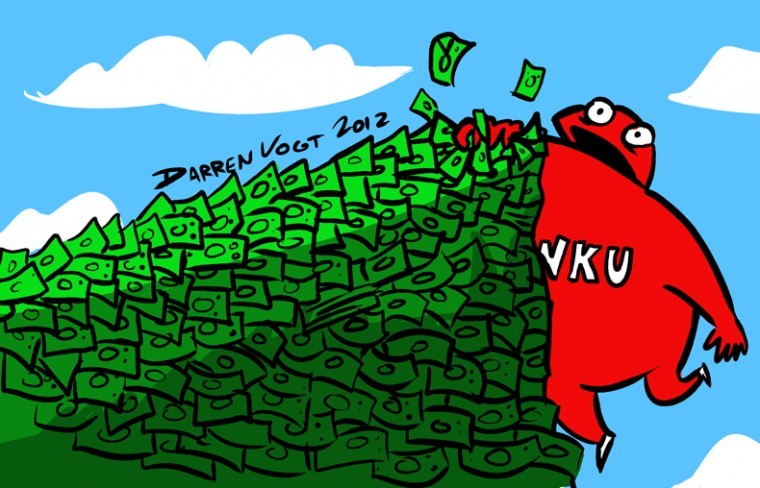CHH Politics: Expert’s Corner: Dissecting the fiscal cliff
December 3, 2012
A number of tax increases and spending cuts are set to hit the economy on Jan. 1, 2013. These collective taxes and spending changes are known as the fiscal cliff. In reality, there is no singular fiscal cliff but rather a set of taxing and spending decisions that Congress and President Barack Obama may or may not choose to confront.
Unless politicians decide otherwise, the following $400 billion ($3,700 per household) worth of tax increases will hit the economy in January:
Income tax rates will increase on all federal income tax payers. The bottom tax bracket will increase from 10 percent to 15 percent, the top tax bracket will rise from 35 percent to 39.6 percent, and many taxpayers will be pushed into higher tax brackets. The payroll tax will also increase from 13.3 percent to 15.3 percent.
One in five taxpayers will become subject to the Alternative Minimum Tax, which limits people’s use of popular deductions for things such as charitable giving or home mortgage interest.
Many specific tax cuts will vanish. These include the enhanced dependent and child care credits, the enhanced adoption credit, some of the earned income credit, the enhanced student loan interest credit, the exemption for mortgage debt forgiveness, the deductibility of state and local sales taxes, IRA charitable donation provisions for the elderly and the educator’s classroom deduction.
Estates over $1 million will face a top tax rate of 55 percent, up from the current rate of 35 percent on estates worth more than $5.12 million.
The long-term capital gains tax rate will increase from 15 percent to 20 percent (23.8 percent for high-income earners courtesy of the Affordable Care Act). Some small business tax deductions will disappear, and the tax on dividends will go from 15 percent to be taxed as ordinary income.
Unless politicians decide otherwise, $102 billion worth of spending cuts will automatically hit in January. Emergency unemployment compensation spending will be cut by $26 billion. Payments to doctors who see Medicare patients will see their reimbursement cut by $11 billion, and the $65 billion sequester (across the board spending cuts) will kick in.
The Real Fiscal Cliff
In 2012, the federal government spent $3.5 trillion but only collected $2.4 trillion in taxes. That put the federal budget deficit over $1 trillion for the fourth straight year. The U.S. national debt now stands at $16.3 trillion. Allowing the entire fiscal cliff to occur would not even cut the budget deficit in half, much less balance the federal budget.
If $500 billion is a fiscal cliff, what is a $86.8 trillion bill called? That’s the unfunded liability in Medicare ($42.8 trillion), Social Security ($20.5 trillion) and federal worker pensions ($23.5 trillion). Without serious entitlement reform, the Jan. 1 fiscal cliff will look like a mole hill. Spending is not free. It has to be paid for. Avoiding painful tax increases and spending cuts now will only bring even more fiscal pain in the future. Just look at Greece.
Dr. Brian Strow is the WKU BB&T Professor of the Study of Capitalism.





















